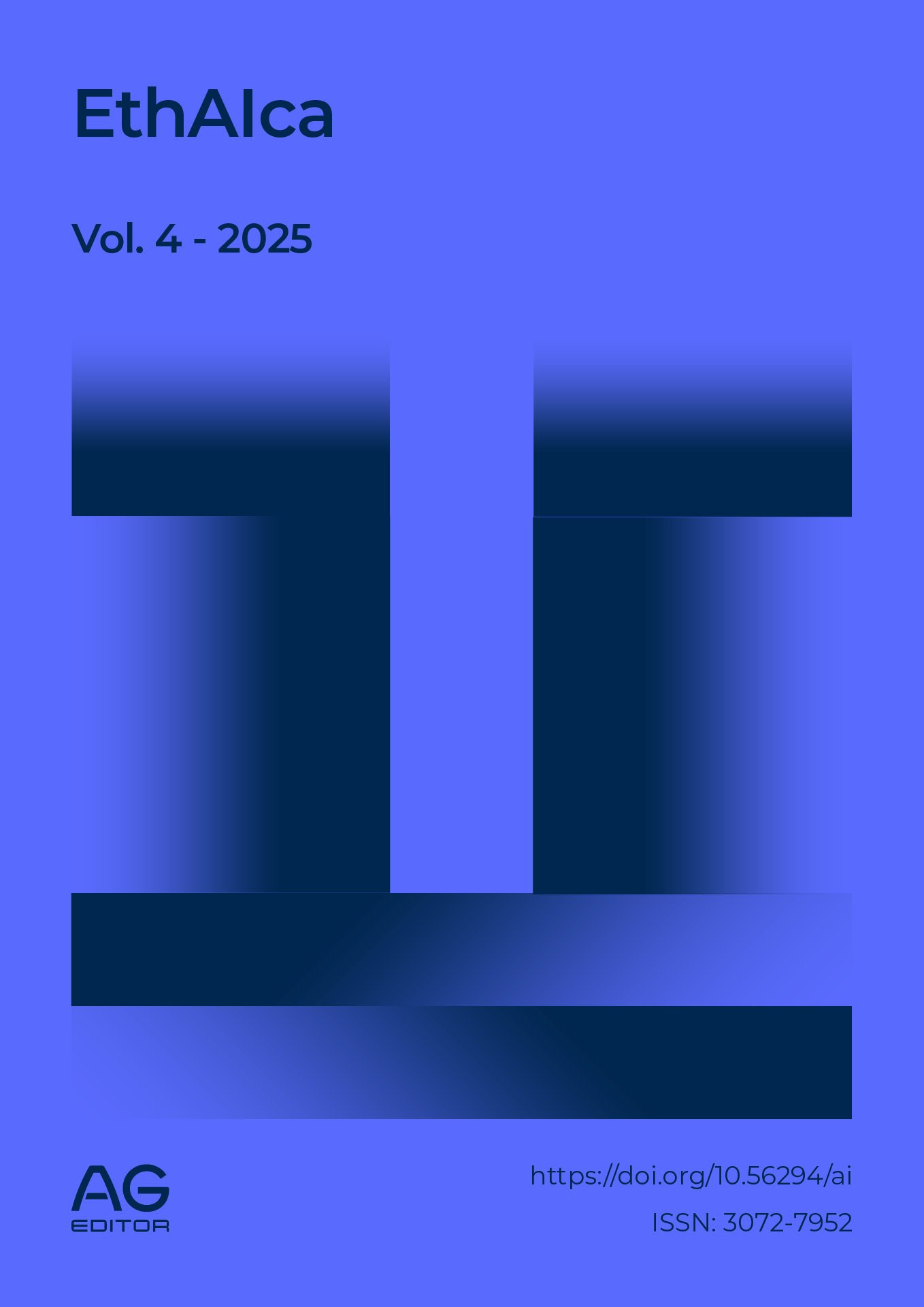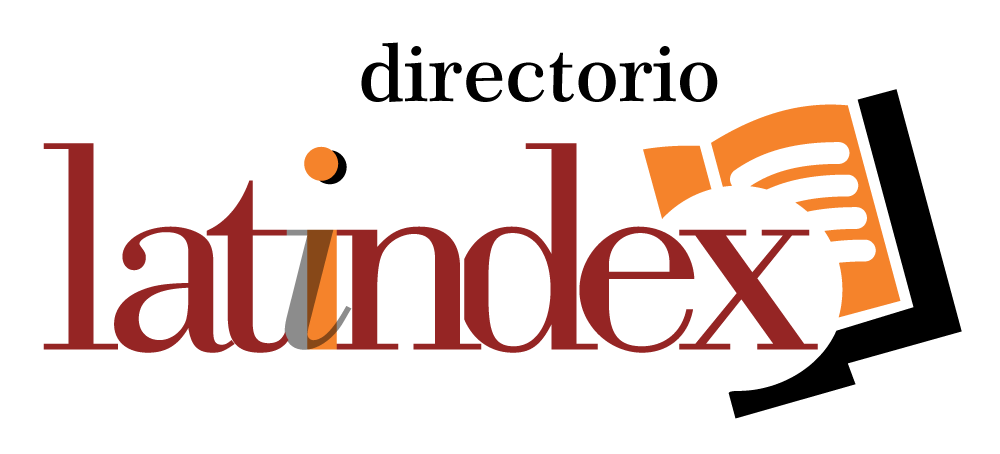Rural socioeconomic transformations mediated by AI
DOI:
https://doi.org/10.56294/ai2025156Keywords:
Digital divide, rural development, artificial intelligence, public policies, socioeconomic transformationAbstract
Introduction: Artificial intelligence (AI) impacts rural dynamics, but its bibliometric study is limited. This paper analyzes academic production on AI and its socioeconomic impact in rural areas between 2019 and 2022. Methodology: A search was conducted in Scopus, Web of Science, and other databases using the terms "AI," "socioeconomic transformations," and "rural." The data was processed using Bibliometrix and VOSviewer to analyze productivity, collaboration networks, and keyword co-occurrence. Duplicates were removed, and filters were applied by year, document type, and thematic relevance. Results: A large number of relevant publications were identified, with an annual growth of a quarter. Thematic core topics included smart agriculture, the digital divide, and rural employment. The United States, China, and India led the scientific production. Conclusions: AI is emerging as an expanding field for rural development, but inequalities in access persist. Further studies on public policy and inclusion are needed.
References
1. Benitez Altuna F, Trienekens J, Materia VC, Bijman J. Factors affecting the adoption of ecological intensification practices: A case study in vegetable production in Chile. Agricultural Systems. 2021;194:103283. https://doi.org/10.1016/j.agsy.2021.103283
2. Díaz Guerra DD, Pérez Gamboa AJ, Gómez Cano CA. Social network analysis in virtual educational environments: Implications for collaborative learning and academic community development. AWARI, 4. https://doi.org/10.47909/awari.595
3. Yu X, Liu Y, Zhang Z, Xiong Y, Dang M. Urban spatial structure features in Qinling mountain area based on ecological network analysis-case study of Shangluo City. Alexandria Engineering Journal. 2022;61(12):12829-45. https://doi.org/10.1016/j.aej.2022.06.049
4. Friedman N, Ormiston J. Blockchain as a sustainability-oriented innovation?: Opportunities for and resistance to Blockchain technology as a driver of sustainability in global food supply chains. Technological Forecasting and Social Change. 2022;175:121403. https://doi.org/10.1016/j.techfore.2021.121403
5. Gómez Cano CA, García Acevedo Y, Pérez Gamboa AJ. Intersection between health and entrepreneurship in the context of sustainable development. Health Leadership and Quality of Life. 2022; 1:89. https://doi.org/10.56294/hl202289
6. Willis VC, Craig KJ, Jabbarpour Y, Scheufele EL, Arriaga YE, Ajinkya M, et al. Digital Health Interventions to Enhance Prevention in Primary Care: Scoping Review. JMIR Medical Informatics. 2022;10(1). https://doi.org/10.1016/j.ijresmar.2021.09.001
7. Haithcoat T, Liu D, Young T, Shyu CR. Investigating Health Context Using a Spatial Data Analytical Tool: Development of a Geospatial Big Data Ecosystem. JMIR Medical Informatics. 2022;10(4). https://doi.org/10.2196/35073
8. Quintero Rueda AJ, Reinosa Ortiz FM, Ortiz Blandón KD, Pinzón Rincon LF, Gómez Cano CA. Alternatives to agricultural production different from the traditional way. Management (Montevideo). 2023; 1:10. https://doi.org/10.62486/agma202310
9. Kihoro EM, Schoneveld GC, Crane TA. Pathways toward inclusive low-emission dairy development in Tanzania: Producer heterogeneity and implications for intervention design. Agricultural Systems. 2021;190:103073. https://doi.org/10.1016/j.agsy.2021.103073
10. Sumpter D, Blodgett N, Beard K, Howard V. Transforming nursing education in response to the Future of Nursing 2020–2030 report. Nursing Outlook. 2022;70(6, Supplement 1):S20-31. https://doi.org/10.1016/j.outlook.2022.02.007
11. Valenzuela Molina L, Sánchez Castillo V, Gómez Cano CA. Dinámica socioproductiva de la producción de miel: El caso del municipio de Oporapa-Huila. Universidad y Sociedad. 2023;15(5): 113-124. http://scielo.sld.cu/pdf/rus/v15n5/2218-3620-rus-15-05-113.pdf
12. Zhou Y, Wu T, Wang Y. Urban expansion simulation and development-oriented zoning of rapidly urbanising areas: A case study of Hangzhou. Science of The Total Environment. 2022;807:150813. https://doi.org/10.1016/j.scitotenv.2021.150813
13. Sun Q, Sun J, Baidurela A, Li L, Hu X, Song T. Ecological landscape pattern changes and security from 1990 to 2021 in Ebinur Lake Wetland Reserve, China. Ecological Indicators. 2022;145:109648. https://doi.org/10.1016/j.ecolind.2022.109648
14. Sánchez Castillo V, Hernandez Morea HG, Rojas Manrique SA. Analysis of farmers’ perception of macroinvertebrate diversity in the soil. SCT Proceedings in Interdisciplinary Insights and Innovations. 2023;1:18. https://doi.org/10.56294/piii202319
15. Bragg MG, Prado EL, Arnold CD, Zyba SJ, Maleta KM, Caswell BL, et al. Plasma Choline Concentration Was Not Increased After a 6-Month Egg Intervention in 6–9-Month-Old Malawian Children: Results from a Randomized Controlled Trial. Current Developments in Nutrition. 2022;6(2):nzab150. https://doi.org/10.1093/cdn/nzab150
16. Krupiy T. A vulnerability analysis: Theorising the impact of artificial intelligence decision-making processes on individuals, society and human diversity from a social justice perspective. Computer Law & Security Review. 2020;38:105429. https://doi.org/10.1016/j.clsr.2020.105429
17. Gharaibeh A, Shaamala A, Obeidat R, Al-Kofahi S. Improving land-use change modeling by integrating ANN with Cellular Automata-Markov Chain model. Heliyon. 2020;6(9):e05092. https://doi.org/10.1016/j.heliyon.2020.e05092
18. Sanabria Martínez MJ. Construir nuevos espacios sostenibles respetando la diversidad cultural desde el nivel local. Región Científica. 2022;1(1):20222. https://doi.org/10.58763/rc20222
19. Caballero Serrano V, McLaren B, Carrasco JC, Alday JG, Fiallos L, Amigo J, et al. Traditional ecological knowledge and medicinal plant diversity in Ecuadorian Amazon home gardens. Global Ecology and Conservation. 2019;17:e00524. https://doi.org/10.1016/j.gecco.2019.e00524
20. Balland PA, Broekel T, Diodato D, Giuliani E, Hausmann R, O’Clery N, et al. Reprint of The new paradigm of economic complexity. Research Policy. 2022;51(8):104568. https://doi.org/10.1016/j.respol.2022.104568
21. Shiji C, Dhakal S, Ou C. Greening small hydropower: A brief review. Energy Strategy Reviews. 2021;36:100676. https://doi.org/10.1016/j.esr.2021.100676
22. Childs CE, Munblit D, Ulfman L, Gómez Gallego C, Lehtoranta L, Recker T, et al. Potential Biomarkers, Risk Factors, and Their Associations with IgE-Mediated Food Allergy in Early Life: A Narrative Review. Advances in Nutrition. 2022;13(2):633-51. https://doi.org/10.1093/advances/nmab122
23. Yin Y, Hou X, Liu J, Zhou X, Zhang D. Detection and attribution of changes in cultivated land use ecological efficiency: A case study on Yangtze River Economic Belt, China. Ecological Indicators. 2022;137:108753. https://doi.org/10.1016/j.ecolind.2022.108753
24. Higuera Carrillo EL. Aspectos clave en agroproyectos con enfoque comercial: Una aproximación desde las concepciones epistemológicas sobre el problema rural agrario en Colombia. Región Científica. 2022;1(1):20224. https://doi.org/10.58763/rc20224
25. Mandal S, Wiesenfeld BM, Mann D, Lawrence K, Chunara R, Testa P, et al. Evidence for Telemedicine’s Ongoing Transformation of Health Care Delivery Since the Onset of COVID-19: Retrospective Observational Study. JMIR Formative Research. 2022;6(10). https://doi.org/10.2196/38661
26. Wójcik P, Andruszek K. Predicting intra‐urban well‐being from space with nonlinear machine learning. Regional Science Policy & Practice. 2022;14(4):891-914. https://doi.org/10.1111/rsp3.12478
27. Mariye M, Jianhua L, Maryo M. Land use and land cover change, and analysis of its drivers in Ojoje watershed, Southern Ethiopia. Heliyon. 2022;8(4):e09267. https://doi.org/10.1016/j.heliyon.2022.e09267
28. Murgas Téllez B, Henao Pérez AA, Guzmán Acuña L. Opciones Reales y su aplicación en proyectos de energía renovable. Revisión de estado del arte. Región Científica. 2023;2(1):202349. https://doi.org/10.58763/rc202349
29. Liu Y, Tooze JA, Zhang Y, Leidy HJ, Bailey RL, Wright B, et al. Breakfast Consumption Is Positively Associated with Usual Nutrient Intakes among Food Pantry Clients Living in Rural Communities. The Journal of Nutrition. 2020;150(3):546-53. https://doi.org/10.1093/jn/nxz258
30. Medeiros A, Fernandes C, Gonçalves JF, Farinha Marques P. Research trends on integrative landscape assessment using indicators – A systematic review. Ecological Indicators. 2021;129:107815. https://doi.org/10.1016/j.ecolind.2021.107815
31. Ozgun B, Broekel T. The geography of innovation and technology news - An empirical study of the German news media. Technological Forecasting and Social Change. 2021;167:120692. https://doi.org/10.1016/j.techfore.2021.120692
32. Zhang P, Ma W, Wen F, Liu L, Yang L, Song J, et al. Estimating PM2.5 concentration using the machine learning GA-SVM method to improve the land use regression model in Shaanxi, China. Ecotoxicology and Environmental Safety. 2021;225:112772. https://doi.org/10.1016/j.ecoenv.2021.112772
33. Arévalo Zurita M, Expósito García E, Apez Arévalo I. Gestión empresarial y prácticas de equidad e igualdad de género: el caso de la empresa Agroforestal Cafetalera Tercer Frente. Región Científica. 2023;2(2):202375. https://doi.org/10.58763/rc202375
34. Cook L, Espinoza J, Weiskopf NG, Mathews N, Dorr DA, Gonzales KL, et al. Issues With Variability in Electronic Health Record Data About Race and Ethnicity: Descriptive Analysis of the National COVID Cohort Collaborative Data Enclave. JMIR Medical Informatics. 2022;10(9). https://doi.org/10.2196/39235
35. Pan Y, Qiu L, Wang Z, Zhu J, Cheng M. Unravelling the association between polycentric urban development and landscape sustainability in urbanizing island cities. Ecological Indicators. 2022;143:109348. https://doi.org/10.1016/j.ecolind.2022.109348
36. Sharma GD, Kraus S, Srivastava M, Chopra R, Kallmuenzer A. The changing role of innovation for crisis management in times of COVID-19: An integrative literature review. Journal of Innovation & Knowledge. 2022;7(4):100281. https://doi.org/10.1016/j.jik.2022.100281
37. Yapa C, Alwis C de, Liyanage M, Ekanayake J. Survey on blockchain for future smart grids: Technical aspects, applications, integration challenges and future research. Energy Reports. 2021;7:6530-64. https://doi.org/10.1016/j.egyr.2021.09.112
38. Gonzales Centon JM, Chávez Cubas W, Berrio Huillcacuri J, Santos Maldonado AB. El crecimiento empresarial y su relación en la rentabilidad de una MYPE del rubro comercial en Arequipa, Perú. Región Científica. 2023;2(2):202387. https://doi.org/10.58763/rc202387
39. Martinez DS, Noseworthy PA, Akbilgic O, Herrmann J, Ruddy KJ, Hamid A, et al. Artificial intelligence opportunities in cardio-oncology: Overview with spotlight on electrocardiography. American Heart Journal Plus: Cardiology Research and Practice. 2022;15:100129. https://doi.org/10.1016/j.ahjo.2022.100129
40. Rejeb A, Rejeb K, Abdollahi A, Al-Turjman F, Treiblmaier H. The Interplay between the Internet of Things and agriculture: A bibliometric analysis and research agenda. Internet of Things. 2022;19:100580. https://doi.org/10.1016/j.iot.2022.100580
41. Mizen A, Lyons J, Milojevic A, Doherty R, Wilkinson P, Carruthers D, et al. Impact of air pollution on educational attainment for respiratory health treated students: A cross sectional data linkage study. Health & Place. 2020;63:102355. https://doi.org/10.1016/j.healthplace.2020.102355
42. Fernández Hernández A, Bravo Benítez E. Potencialidad del nearshoring para el desarrollo económico de México. Región Científica. 2023;2(2):2023105. https://doi.org/10.58763/rc2023105
43. Sharif RA, Pokharel S. Smart City Dimensions and Associated Risks: Review of literature. Sustainable Cities and Society. 2022;77:103542. https://doi.org/10.1016/j.scs.2021.103542
44. Casali Y, Aydin NY, Comes T. Machine learning for spatial analyses in urban areas: a scoping review. Sustainable Cities and Society. 2022;85:104050. https://doi.org/10.1016/j.scs.2022.104050
45. Ungson GR, Soorapanth S. The ASEAN blockchain roadmap. Asia and the Global Economy. 2022;2(3):100047. https://doi.org/10.1016/j.aglobe.2022.100047
46. Cruz Jesus F, Castelli M, Oliveira T, Mendes R, Nunes C, Sa Velho M, et al. Using artificial intelligence methods to assess academic achievement in public high schools of a European Union country. Heliyon. 2020;6(6):e04081. https://doi.org/10.1016/j.heliyon.2020.e04081
47. González Vallejo R. La transversalidad del medioambiente: facetas y conceptos teóricos. Región Científica. 2023;2(2):202393. https://doi.org/10.58763/rc202393
48. Viegas R, Dineen Griffin S, Söderlund LÅ, Acosta Gómez J, Guiu JM. Telepharmacy and pharmaceutical care: A narrative review by International Pharmaceutical Federation. Farmacia Hospitalaria. 2022;46:86-91. https://doi.org/10.7399/fh.13244
49. Mondejar ME, Avtar R, Diaz HL, Dubey RK, Esteban J, Gómez Morales A, et al. Digitalization to achieve sustainable development goals: Steps towards a Smart Green Planet. Science of The Total Environment. 2021;794:148539. https://doi.org/10.1016/j.scitotenv.2021.148539
50. Mu L, Fang L, Dou W, Wang C, Qu X, Yu Y. Urbanization-induced spatio-temporal variation of water resources utilization in northwestern China: A spatial panel model based approach. Ecological Indicators. 2021;125:107457. https://doi.org/10.1016/j.ecolind.2021.107457
51. Burgess P, Sunmola F, Wertheim Heck S. Blockchain Enabled Quality Management in Short Food Supply Chains. Procedia Computer Science. 2022;200:904-13. https://doi.org/10.1016/j.procs.2022.01.288
52. Xie L, Wang H, Liu S. The ecosystem service values simulation and driving force analysis based on land use/land cover: A case study in inland rivers in arid areas of the Aksu River Basin, China. Ecological Indicators. 2022;138:108828. https://doi.org/10.1016/j.ecolind.2022.108828
53. Álvarez Contreras DE, Montes Padilla JD, Osorio Martínez CD. Habilidades gerenciales como factor de competitividad empresarial. Región Científica. 2023;2(2):2023109. https://doi.org/10.58763/rc2023109
Published
Issue
Section
License
Copyright (c) 2025 Elvia María Jiménez Zapata (Author)

This work is licensed under a Creative Commons Attribution 4.0 International License.
The article is distributed under the Creative Commons Attribution 4.0 License. Unless otherwise stated, associated published material is distributed under the same licence.






